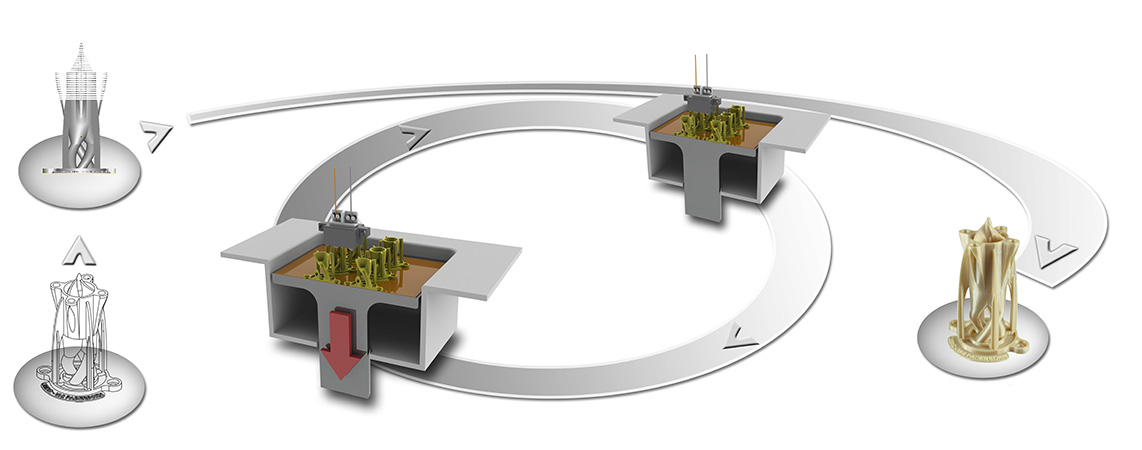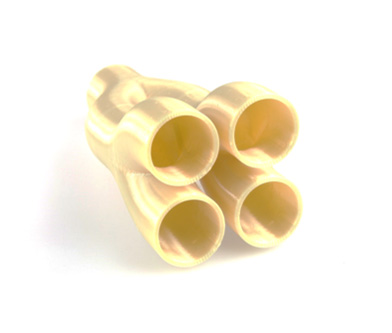Fused Deposition Modeling (FDM)
Fused Deposition Modelling (FDM)
FDM (fused deposition modelling) is an additive manufacturing process for the production of thermoplastic components. The components are generated using a heated thermoplastic strand by applying it layer by layer in a defined manner. The FDM process is patented by Stratasys Inc. and was first introduced to the market in 1991 in the USA and 1994 in Europe. Since 2003, this process has been one of the most widely used additive manufacturing processes for the production of prototypes, tools and end products.
In the FDM process, the thermoplastic material is available as a continuous strand, which is pulled into the FDM head by means of motors, melted there and applied to the building platform or the existing structure in a defined manner through a nozzle. Due to thermal fusion, the material bonds with the underlying layer and solidifies immediately. This creates a permanent bond between two layers and a component is built up layer by layer from the bottom up.
There are currently 13 different materials available in the FDM process, including polyamide 12, the first semi-crystalline plastic. The other polymers are amorphous plastics that can also be found in classic injection moulding and therefore in series components. These include ABS, PC and PC-ABS blend, for example. High-temperature plastics such as Ultem*9085 (PEI) and PPSU can also be used. The materials have different material properties and therefore also different mechanical properties. Different layer heights can be realised by selecting nozzles of different diameters. This allows four different layer heights to be realised, ranging from 127 μm to 330 μm. One limitation is that not every nozzle size can be used for every material, as these are restricted by the process. For the material ABS, for example, all nozzle sizes can be used (T10-T20) and therefore all layer heights can be realised.


